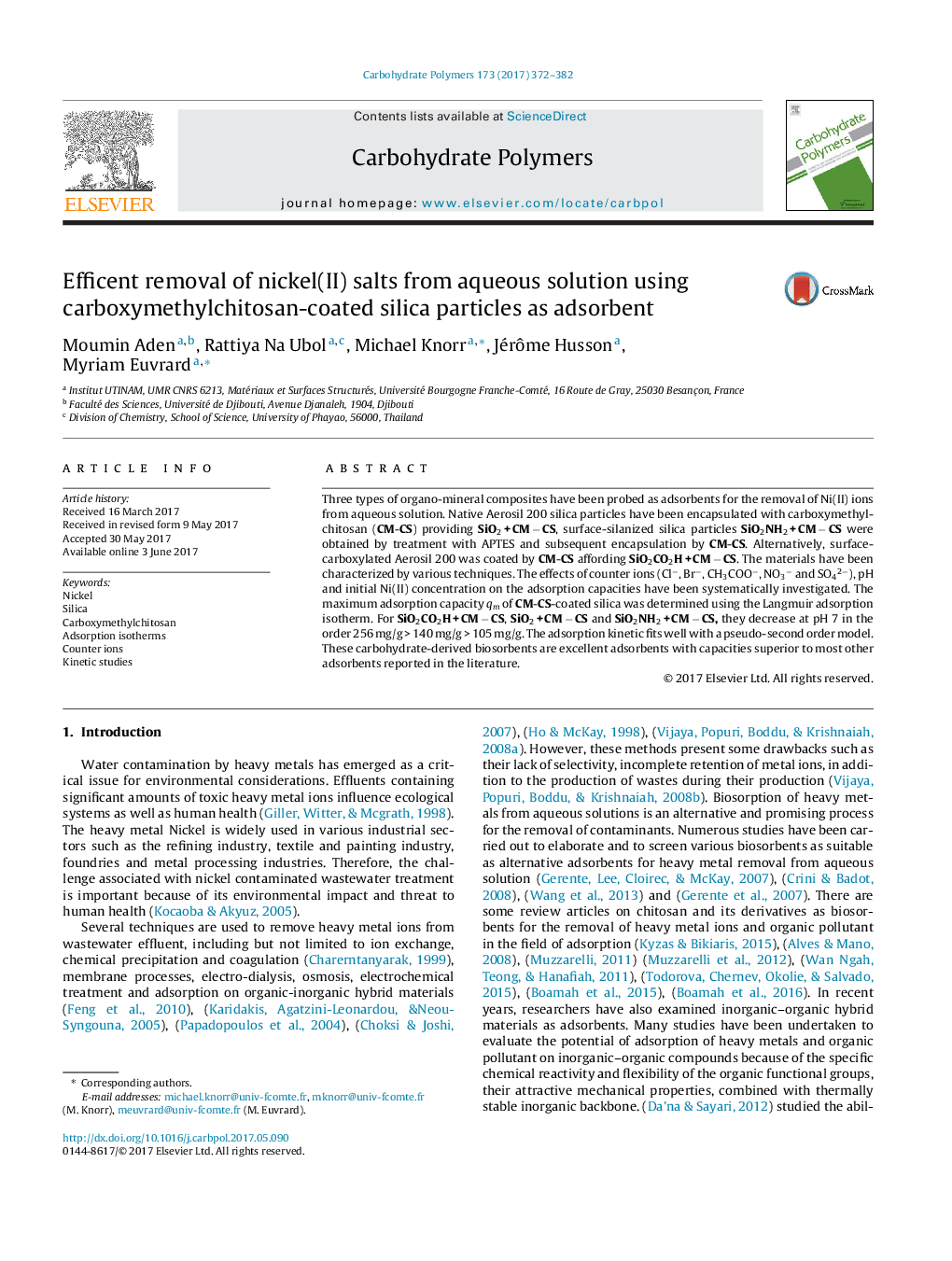| Article ID | Journal | Published Year | Pages | File Type |
|---|---|---|---|---|
| 5157414 | Carbohydrate Polymers | 2017 | 11 Pages |
Abstract
Three types of organo-mineral composites have been probed as adsorbents for the removal of Ni(II) ions from aqueous solution. Native Aerosil 200 silica particles have been encapsulated with carboxymethylchitosan (CM-CS) providing SiO2 + CM â CS, surface-silanized silica particles SiO2NH2 + CM â CS were obtained by treatment with APTES and subsequent encapsulation by CM-CS. Alternatively, surface-carboxylated Aerosil 200 was coated by CM-CS affording SiO2CO2H + CM â CS. The materials have been characterized by various techniques. The effects of counter ions (Clâ, Brâ, CH3COOâ, NO3â and SO42â), pH and initial Ni(II) concentration on the adsorption capacities have been systematically investigated. The maximum adsorption capacity qm of CM-CS-coated silica was determined using the Langmuir adsorption isotherm. For SiO2CO2H + CM â CS, SiO2 + CM â CS and SiO2NH2 + CM â CS, they decrease at pH 7 in the order 256 mg/g > 140 mg/g > 105 mg/g. The adsorption kinetic fits well with a pseudo-second order model. These carbohydrate-derived biosorbents are excellent adsorbents with capacities superior to most other adsorbents reported in the literature.
Related Topics
Physical Sciences and Engineering
Chemistry
Organic Chemistry
Authors
Moumin Aden, Rattiya Na Ubol, Michael Knorr, Jérôme Husson, Myriam Euvrard,
